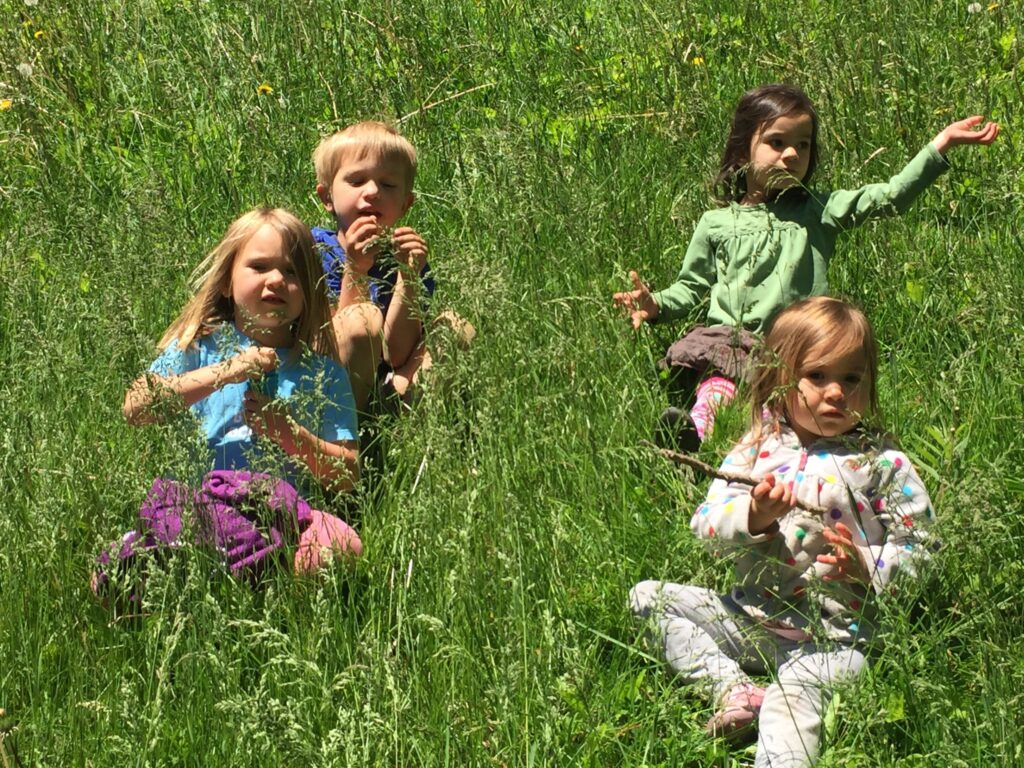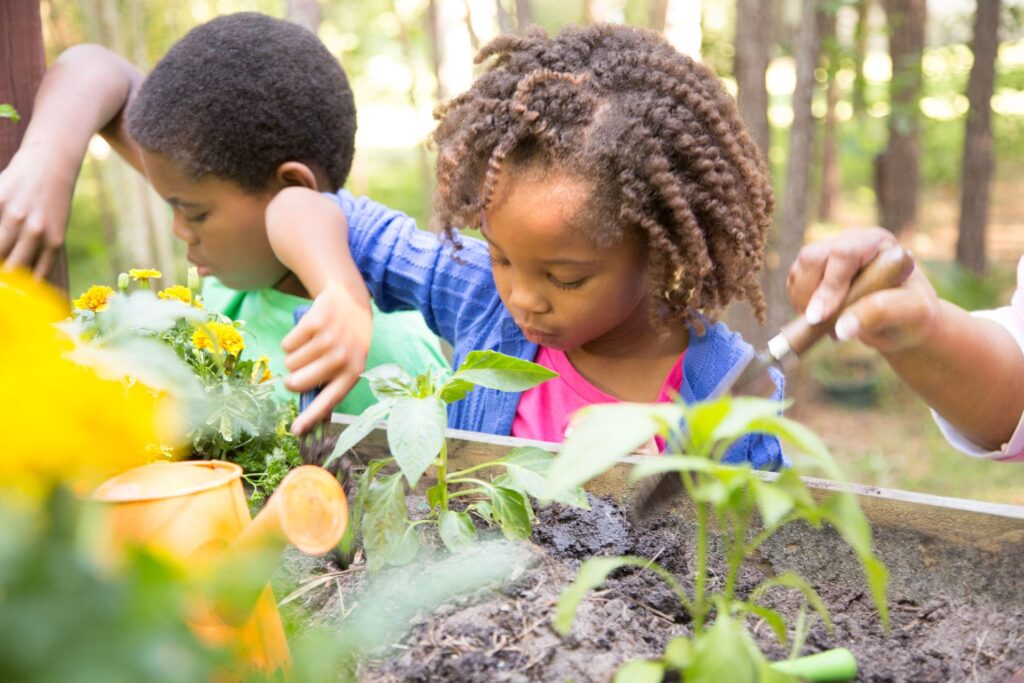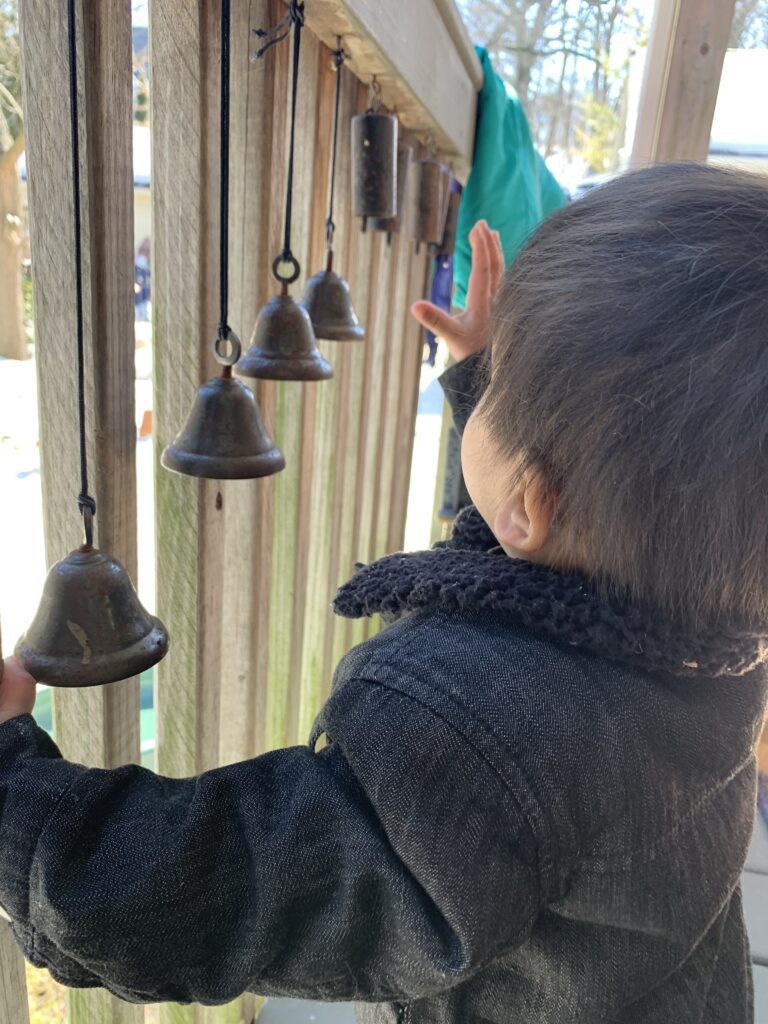Outdoor Play for Kindergarten Readiness

“How can children be ready for kindergarten if they spend their days playing outside?”
As nature-based early childhood educators, we are often asked questions like this one by concerned parents who want to give their children the best start in life. It's important that parents understand the vast amount of learning that can take place when children are immersed in the natural world.
Young children learn primarily through their senses. Nature, with its constantly changing and stimulating elements, provides the ultimate sensory learning environment.

When children use their senses to explore the world through sensory play, they are actively building connections in the brain’s pathways, which is crucial for brain development. And, when we slow down, we can also see the learning and social skills that children develop when they play in natural settings.
How can we provide meaningful learning experiences in an outdoor setting? By creating engaging activities that encourage young learners to explore and investigate the natural world using all eight of their senses (yes, eight!)—and then giving them ample time and space to do so.
So what are the 8 senses? Let's find out!

Hearing
When children listen for and locate sounds in nature, it helps them understand that space is three-dimensional. Birds call from high in the trees, and insects buzz and hum around low-lying plants, attracting the attention of infants on their tummies.
Nature sounds force a child to slow down and listen closely to determine where the sound is coming from. By adding bells, chimes and musical instruments to your outdoor play space, you can stimulate your early learners' senses with a wider variety of sounds.
Taste
Food always tastes better outside. Eating outdoors strips away distractions and connects us to the flavors, textures and tantalizing aromas of food as we connect with nature.
Sharing time outdoors with food also creates a sense of community between family and friends. There is something truly special about eating outdoors. Lunch just seems better when we can take our time to savor our food, share stories and laughter, and nurture the social connections that are so essential to our well-being.
If lunch feels like too much work, start with a snack. If you don’t have a table, spread a tablecloth, a cloth napkin or a blanket on the ground.
Sight
Children who spend time in nature are less likely to suffer from myopia (nearsightedness) than their friends who spend more time looking at screens. Nature calls on us to look carefully and to focus at different distances.
By providing magnifying glasses for the close-up examination of bugs and leaves, you can encourage children to slow down and develop their observational skills.
Binoculars will bring faraway objects up close.
By adding flags or pinwheels that flap and spin in the wind, you can capture the attention of young eyes as the children focus on wind patterns.
Smell
By bringing in plants with blooms that have distinctive, pleasing scents, we can create places of beauty and wonder. Place gardenia and viburnum at key spots along pathways, jasmine near the front door and lilacs outside of windows. Put herb gardens at your entrances, and encourage the children to pick and enjoy the herbs when it suits their fancy.
Incorporate native plants with unique fragrances, colors and textures into your garden.
Check with your city or village to see if you can get a rain garden grant to help cover the cost of adding native plantings to your outdoor space. We were able to create a dry creek rain garden with plantings that attracted butterflies and hummingbirds—and the entire cost was covered by our city's rain garden program. Many municipalities also give away rain barrels, which will collect rainwater that you can use to keep your plants "well-hydrated."
Touch
Skin is the human body's largest organ—and touch is a vital source of stimulation, especially for babies.
Connecting with plants and soil can begin early. Babies soak up sensory experiences in and near the garden. Little hands and bare feet need to experience different textures and temperatures for sensory skills to develop.
Nature is rich in textural and tactile variety: Bark on trees and shrubs can be rough, smooth, bumpy or full of thorns. Leaves can be sticky, fuzzy, delicate or veiny. Stones can be smooth, round or jagged.
By giving children engaging activities to explore the many wonders of nature, you can help them develop strong nerve and sensory connections.
Body Awareness and Balance
Our vestibular sense enables us to determine where our bodies are in space. A child with a poorly functioning vestibular system may frequently run into things, trip or fall. A child with a well-developed vestibular system will have better coordination, spatial awareness and focusing skills. Vestibular development also supports visual activities such as reading and writing and even helps children regulate their emotions.
I am a huge proponent of swings and belly swinging, which help to develop this sense. Whenever children are swinging, swaying, bouncing, rocking or rolling, they are developing their vestibular systems.
To help children develop this vitally important sense, incorporate items such as bench swings, hammocks, rope swings, tire swings and baby swings into your outdoor environment.
Body Movements
Proprioception is another sense that provides feedback about the body's position in space. This is the sense that we need to gently hold a friend’s hand, play tag without tagging too hard, pet an animal or make a light or dark mark on a piece of paper.
When children use their muscles to apply the force needed to push, dig, roll or lift, they become aware of their physical capabilities.
Proprioception helps children build their body awareness and achieve motor milestones. This is why tummy time is so crucial for infants. Activities such as shoveling in the sandbox, moving stones to make a fort or carrying buckets of water are also beneficial.
Internal Sensations
Am I hungry, thirsty, hot or cold? Do I need to use the bathroom? Is my heart racing or beating normally? Interoception focuses on our internal feelings. A peaceful outdoor setting may help children learn how to listen to their bodies and recognize these signals. Have you noticed how five-year-olds need to go to the bathroom every time they sit down to eat? That's because five-year-olds are often too busy to listen to their bodies as they explore this wonderful world!
In a natural environment, sensory learning happens naturally. By taking a moment to look at your outdoor environment and assess its potential, you can determine what you need to add to ensure a well-rounded sensory learning experience. Maybe you can plant some herbs, add a wind chime or outfit the children with binoculars.
Embrace the power of outdoor learning by designing simple gardens that will evoke a sense of wonder and provide abundant learning opportunities.
The Ready Child activity pages offer a multitude of ways to get children outside and moving. Our Paint With Water activity is a good place to start. Why not give it a try?